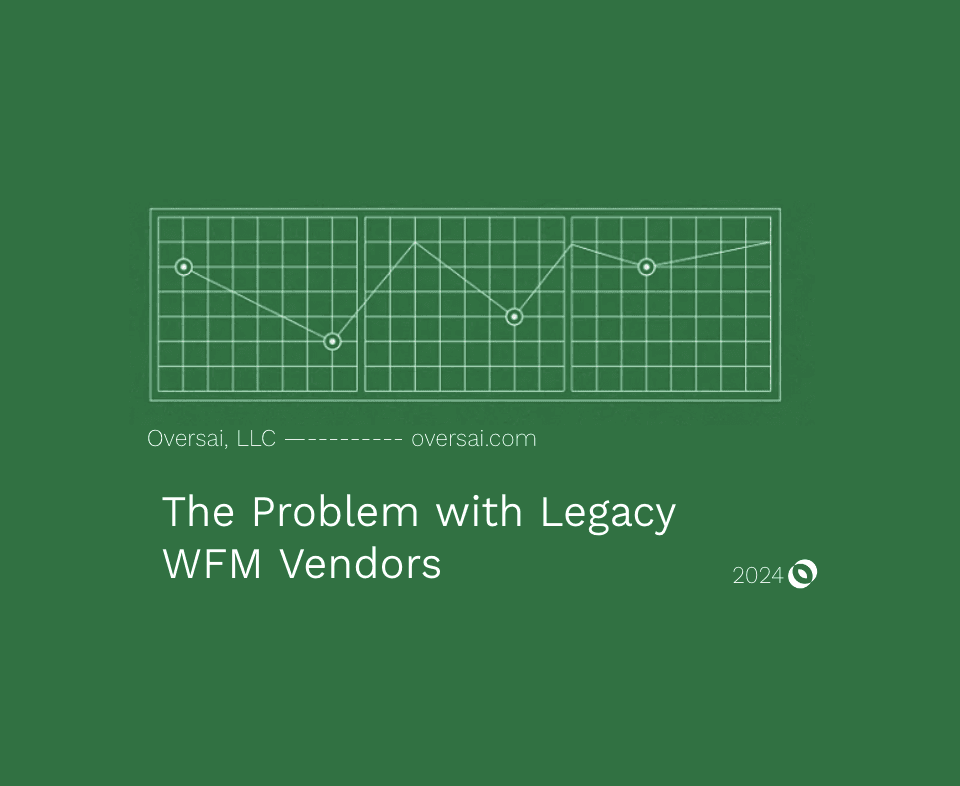Why Workforce Management (WFM) Systems Are Broken
Sep 7, 2024
Hi, I’m Oscar Giraldo, co-founder and CEO of Oversai. After founding Playvox, which was acquired by NICE, and leading the acquisition of Agyle Time, I’ve seen firsthand how Workforce Management (WFM) systems fall short. Through years of working with these tools, I’ve come to believe that they’re fundamentally broken—and here’s why.
1. Complexity and Poor Usability
One of the most frustrating aspects of many WFM systems is their sheer complexity. Many legacy WFM systems, while feature-rich, have interfaces that are labyrinths of menus and sub-menus. Simple tasks like creating an agent profile can require navigating through multiple screens. This complexity not only slows us down but also makes onboarding new team members a daunting task.
2. Lack of Integration
In the call center world, integration is key. Different clients use different CRMs/ACDs, and integrating these with a single WFM system can be a logistical nightmare. There have been situations where users had to manually track calls because the WFM system couldn’t integrate with the client’s CRM/ACD. This lack of integration leads to inefficiencies and errors, making their jobs harder than necessary.
3. Inadequate Reporting Capabilities
Accurate and timely reporting is the backbone of effective workforce management. Yet, many WFM systems fall short. I’ve had to download multiple reports and manually compile them just to get a clear picture of what’s happening. This not only wastes valuable time but also detracts from more strategic tasks that could drive the business forward.
4. Inefficient Forecasting and Scheduling
Forecasting and scheduling should be the core strengths of any WFM system, but many tools fail to deliver. Without real-time data and AI-driven forecasting, we’re left making decisions based on outdated information. This can lead to overstaffing or understaffing, both of which are costly and disruptive.
5. Limited Customization
Every organization is unique, and a one-size-fits-all approach rarely works. Many WFM systems offer limited customization, forcing us to adapt our processes to fit the tool rather than the other way around. This misalignment can lead to inefficiencies and reduced employee satisfaction, which ultimately impacts the bottom line.
6. High Costs with Low ROI
Many WFM systems come with a hefty price tag but fail to deliver a proportional return on investment. High-end tools with numerous features that are rarely used can drain resources without providing significant benefits. It’s crucial for organizations to carefully evaluate whether the cost of a WFM system is justified by the value it brings.
7. Alternative to Legacy WFM Systems
Oversai is building a next-generation alternative to outdated WFM systems like Playvox by NICE, Verint, Calabrio, Zendesk WFM (formerly Timeshift), and Assembled. Our approach focuses on simplicity, seamless integration, and real-time AI-driven forecasting—addressing the core issues of complexity, poor usability, and inefficiency that plague traditional systems. By offering a smarter, more agile solution, Oversai empowers businesses to optimize workforce management without the headaches of legacy tools.
Conclusion:
The current state of WFM systems leaves much to be desired. We need tools that are user-friendly, integrate seamlessly with other platforms, provide robust reporting capabilities, and offer accurate forecasting and scheduling. Until these issues are addressed, WFM systems will continue to be a source of frustration rather than a solution.
Thank you for taking the time to read my thoughts. I hope this sheds some light on the challenges we face and sparks a conversation on how we can improve these essential tools.
Finally, I’d like to express my sincere thanks to Ilija Krstevski for generously sharing his experiences and insights, which have contributed greatly to shaping my views in this article.
